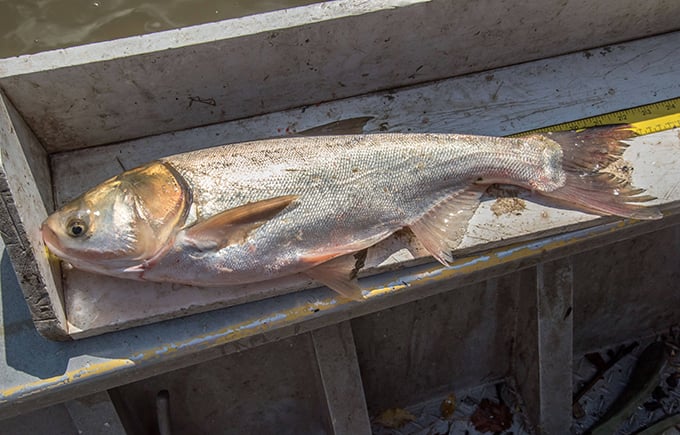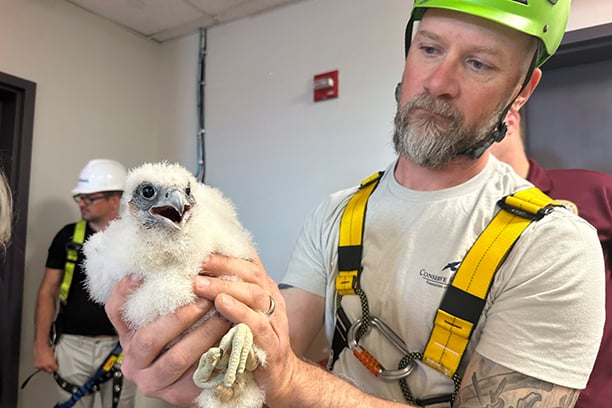Invasive carp detected in Wisconsin’s Lower Chippewa and Lower Black Rivers – Outdoor News

MADISON, Wis. – The Wisconsin Department of Natural Resources (DNR) announced today that silver carp, an invasive species, have been detected in portions of the lower Chippewa River and lower Black River in western Wisconsin.
In May 2024, the United States Fish and Wildlife Service (USFWS) collected 134 water samples from the lower Chippewa River to test for invasive carp environmental DNA (eDNA). At that time, no eDNA was found for invasive carp.
In July, the DNR began receiving reports from anglers of jumping fish suspected to be invasive carp at the Dells Dam on the lower Chippewa River in Eau Claire. The Dells Dam in Eau Claire prevents further upstream passage of invasive carp in the Chippewa River System.
On Aug. 1, DNR staff went to the dam and observed jumping fish but were unable to verify the species of fish. On Aug. 27, the DNR downloaded data from an acoustic receiver tasked with listening for transmitters embedded in fish in the lower Chippewa River, 6 miles downstream of the Dells Dam.
Data showed that a single silver carp, originally tagged and captured on the Mississippi River near Davenport, Iowa, was detected on July 21, Aug. 4 and Aug. 26, confirming that silver carp had migrated into the lower Chippewa River at that time.
MORE COVERAGE FROM WISCONSIN OUTDOOR NEWS:
Bull elk hunters go four for four in first Jackson County, Wis., hunt
Suspects cited in southeast Wisconsin deer poaching case
New either-sex ‘replacement’ deer tags available this fall in Wisconsin
On Sept. 26, DNR staff downloaded data from an acoustic receiver on the lower Black River near Melrose which showed that one silver carp passed that location on May 25 and June 5. This fish was originally captured and tagged in Pool 5A of the Mississippi River.
It is believed that the carp may have migrated in June and early July due to the high water levels observed on the Mississippi River, which would have allowed fish to move upstream into adjacent tributaries.
Tributaries to the lower Chippewa River, such as the Red Cedar River up to the Lake Menomin Dam and the Eau Claire River up to the Lake Altoona Dam, may be other potential locations where invasive carp might be observed since these waterbodies do not have barriers that would prevent upstream fish movement from the adjacent lower Chippewa River.
The dam in Black River Falls is a barrier to upstream fish migration, and no observations or other detections of invasive carp have been reported in the lower Black River at this time.
The USFWS is currently in the process of resampling the Chippewa River, and members of the public should notify local aquatic invasive species staff or fisheries biologists if any suspected invasive carp are observed or captured in the lower Chippewa and Black rivers or their tributaries.
What to do if you catch an invasive carp
Prevention remains the best way to help protect Wisconsin’s waters.
Under chapter NR 40, Wis. Admin. Code, bighead, silver, grass and black carp are prohibited species in Wisconsin, meaning they cannot be transported, possessed, transferred or introduced without a permit. However, a permit is not required for a person to possess and transport a deceased prohibited species to a DNR office for the purpose of identification.
Anglers and others who capture any potential invasive carp are asked to euthanize the fish, put them on ice and contact a local aquatic invasive species staff, fisheries biologist or warden to confirm identification.
Although no technology currently exists to eradicate invasive carp, the DNR is working collaboratively with other state and federal agencies on the research and development of invasive carp prevention and control technologies.






